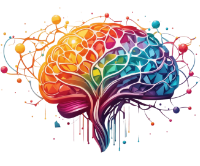Summary: The AI rivalry between the U.S. and China is intensifying, fueled by tough export restrictions and escalating rhetoric portraying artificial intelligence development as a zero-sum game. But global progress, peace, and stability may hang in the balance, with collaboration offering a sustainable path forward instead of confrontation.
The New U.S. Rules Restricting AI Export
The Biden administration has imposed evolving export controls aimed at limiting China’s access to high-performance AI technology. These measures include restrictions on clusters of advanced computing and proprietary model weights for “frontier” AI models. Such rules follow precedents set by the Trump administration and mark a significant U.S. policy shift aimed at curbing China’s AI progression.
However, questions abound. How exactly will these performance levels be quantified? With open-weight AI models often optimized by end-users, including Chinese firms, enforcement is complicated. These new restrictions also pose challenges for U.S. companies. Legal uncertainties, increased compliance expenses, and limited global expansion loom large for Western tech giants such as Google, Microsoft, AWS, and Oracle. The long-term impacts could disrupt global research and development as regulatory bottlenecks add friction to international collaboration.
China’s Technology Self-Reliance: A Double-Edged Sword
While U.S. sanctions may have temporarily slowed China’s AI momentum, they’ve galvanized Beijing’s determination to achieve self-reliance in frontier technologies. Significant investments, amounting to tens of billions of dollars, are strengthening domestic semiconductor capabilities and fostering innovation within China’s AI ecosystem.
Chinese developers are becoming resourceful, navigating the limitations of legacy Western AI hardware while advancing indigenous alternatives. Progress may not match the pace of Western firms, but the trajectory is clear: China is steadily building its capacity across both AI hardware and software stacks. The law of unintended consequences is playing out, potentially creating a new powerhouse that thrives on reduced dependency on Western technologies.
The Danger of Zero-Sum Thinking in AI
Amidst these developments is an alarming narrative emanating from Silicon Valley: a portrayal of AI competition as a zero-sum game where only one country can dominate. Championing this rhetoric are influential voices like OpenAI’s Sam Altman and Anthropic’s Dario Amodei, whose emphasis on “beating China” overshadows the complex reality.
This attitude risks reducing the global AI race into a militarized contest where collaboration between U.S. and Chinese firms becomes undesired, even in beneficial sectors like medicine or renewable energy. Experts warn against this framing; no single nation can sustain a long-term lead without mutual exchange. Instead, isolating efforts threaten to break the virtuous collaborative cycle that has historically driven AI breakthroughs.
Worse, zero-sum strategies could force China to withdraw from multilateral AI governance frameworks. This would likely make global oversight difficult, compromising safety and ethical development standards worldwide. What is left is a fragmented AI world rife with unaligned priorities.
Export Restrictions: A Risky Strategy
U.S. policies assume AI will play central roles in future economic and military dominance. Yet, the evidence for specific military applications that justify these sweeping controls remains fuzzily defined. A future rooted in technological antagonism raises the stakes unnecessarily, fracturing global progress and endangering shared scientific discovery.
The global AI research community—where nearly half of top contributors originate from China—underscores the power of cross-border collaboration. Blocking these relationships risks stifling the “virtuous cycle” critical to technological innovation. By emphasizing conflict over cooperation, both countries risk mutual harm instead of collective progress.
From Competition to Collaboration: An Alternate Path
The world faces a pivotal choice: dive deeper into the rhetoric of competition or pivot toward collaboration that benefits humanity as a whole. Experts advocate prioritizing international AI dialogue and creating aligned safety frameworks for its responsible use. Shared efforts could be modeled after global scientific initiatives like CERN, focusing on innovation as a cooperative venture rather than an arms race.
There’s an urgent need for both nations to recalibrate. Policymakers must shift the narrative, pulling it away from military dominance and redefining AI as a tool for solving global challenges. Joint standards for governance, monitoring misuse, and incentivizing cross-border academic and industrial collaborations are promising pathways.
The High Stakes of Misalignment
The current trajectory poses risks far beyond national borders. The escalating AI rivalry threatens global stability, economic balance, and technological progress. Persistent confrontation could lead to isolation, inefficiency, and dangerous fragmentation. In contrast, alignment and cooperative frameworks could guide AI toward solutions for medicine, climate, and other shared challenges.
A Manhattan Project mindset—focusing solely on dominance—may lead to immense barriers for AI governance, while an open, collaborative approach could unlock gains for all nations. Experts are clear: a future built on competition will only deepen divides, but cooperation promises a more prosperous and stable global landscape.
Conclusion: The Choice is Ours
The stark choice facing global leaders is deceptively simple but deeply profound: worsened rivalry or recalibrated collaboration. Both nations must decide whether they will let nationalistic ambitions override collective interests. A united world demonstrates strength not in isolated progress but in shared innovation.
Technological advancements like AI frequently appear zero-sum on the surface, but history shows the opposite. Global safety, stability, and prosperity depend on dialogues that transcend borders. Governments, businesses, and researchers should collaborate to foster a sustainable AI trajectory, ensuring it remains a uniting force rather than a divisive tool.
#AICompetition #USChinaAI #ResponsibleTechnology #IntlCollaboration #AIGovernance #GlobalInnovation
Featured Image courtesy of Unsplash and Mimi Thian (vdXMSiX-n6M)
